Gov't said Filipinos are 'pasaway' and violate quarantine, but data show otherwise
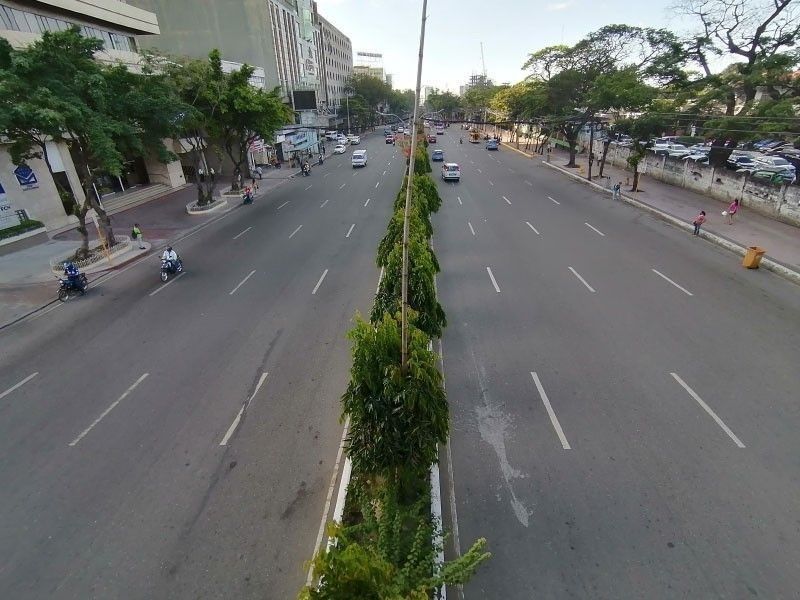
MANILA, Philippines — In his latest speech, President Rodrigo Duterte blamed the rise in coronavirus disease-2019 (COVID-19) cases in Cebu City over what he called a “complacent” populace.
The government response to a new COVID-19 epicenter was to bring in Environment Secretary Roy Cimatu, a former military man, and add more troops on the ground to do one thing: enforce a more stringent lockdown.
Over the past three months, the Duterte administration has heavily relied on containment measures and movement restrictions to try to arrest periodic virus spikes. Local government units followed suit, shutting down entire towns for a couple of days when cases rose. That would have been okay, except that in days when infections increased, state officials were quick to blame the citizenry.
Take presidential spokesperson Harry Roque for example. On the face of tough Luzon lockdowns in April, Roque said: “Many Filipinos are disobedient and because of that we have the highest number of COVID-19 cases in ASEAN. That's shameful.”
“Stop being disobedient and stay at home,” he said at the time.
Data show Roque, as well as other government officials, were wrong to blame the public. Mobility data from tech giant Google LLC showed that, in fact, people were doing their part and staying at home. At the height of the Luzon lockdown on April 10, Google mobility data recorded a 90% drop on people visiting retail outlets, including malls, from the number recorded pre-pandemic levels.
In contrast, movements in residential households in the same date saw a 43% uptick during the same period.
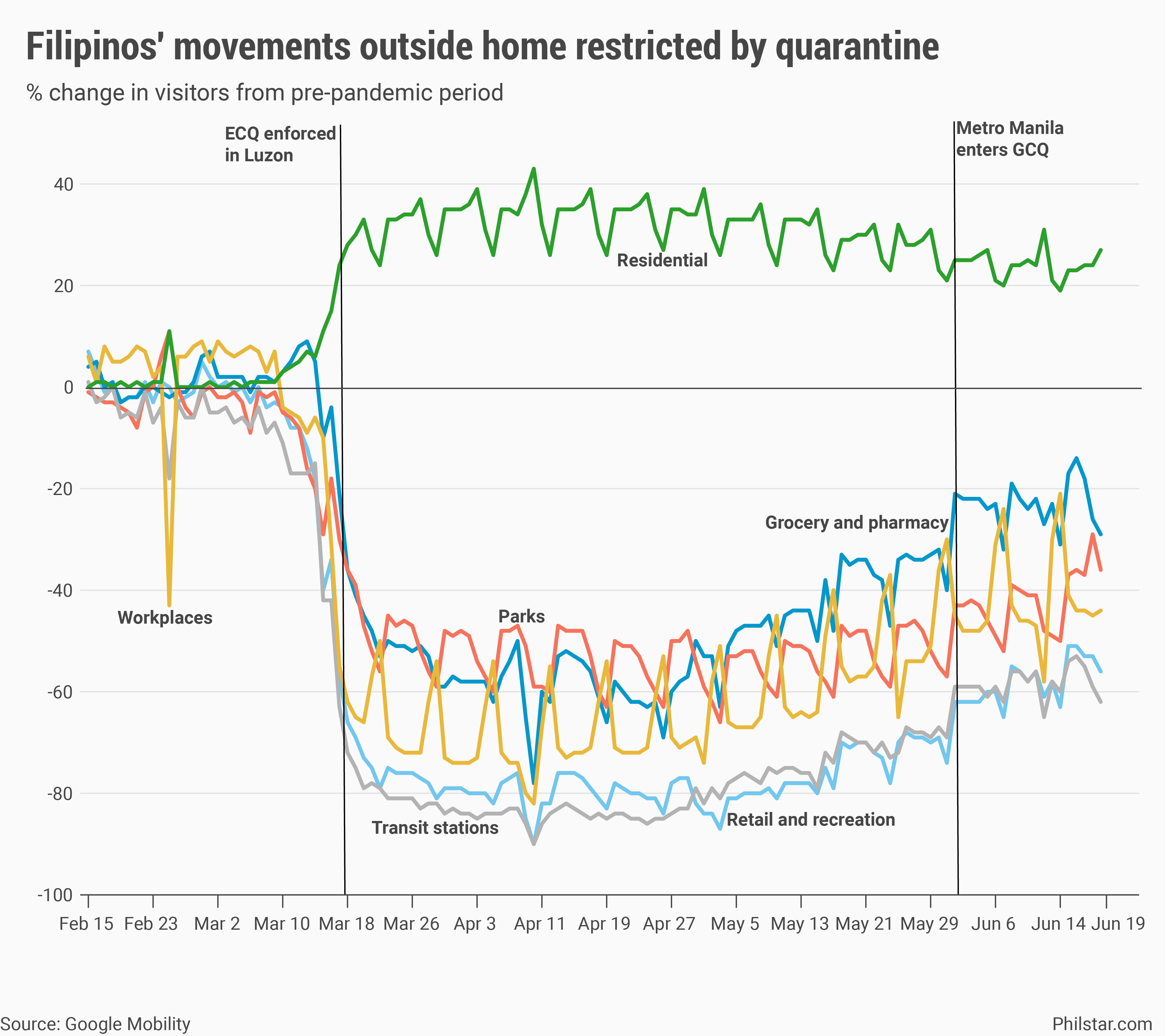
Google data
The measurement is based on Google metrics that gauge movement trends across different places using data from phone users who have their location history on. It was unclear how many people with phones were covered by the data, but the Philippines is among the world's largest phone users, with around 26 million smart phone owners as of 2016, according to Statista, a data provider.
The baseline for comparison was the average movements recorded during the five-week period from Jan. 3 to Feb. 6, just before COVID-19 spiraled into a full-blown pandemic, prompting lockdowns that remain in place to date.
For the Philippines, President Duterte first enforced an enhanced community quarantine in Metro Manila on March 15. On that date, the typically-crowded transport system in the Metro, on average, saw a 58% drop in passengers, according to Google.
Workplaces saw 16% decline in foot traffic, groceries and pharmacies a 24% dip, all while movements in our homes rose 15% on that date from the baseline period.
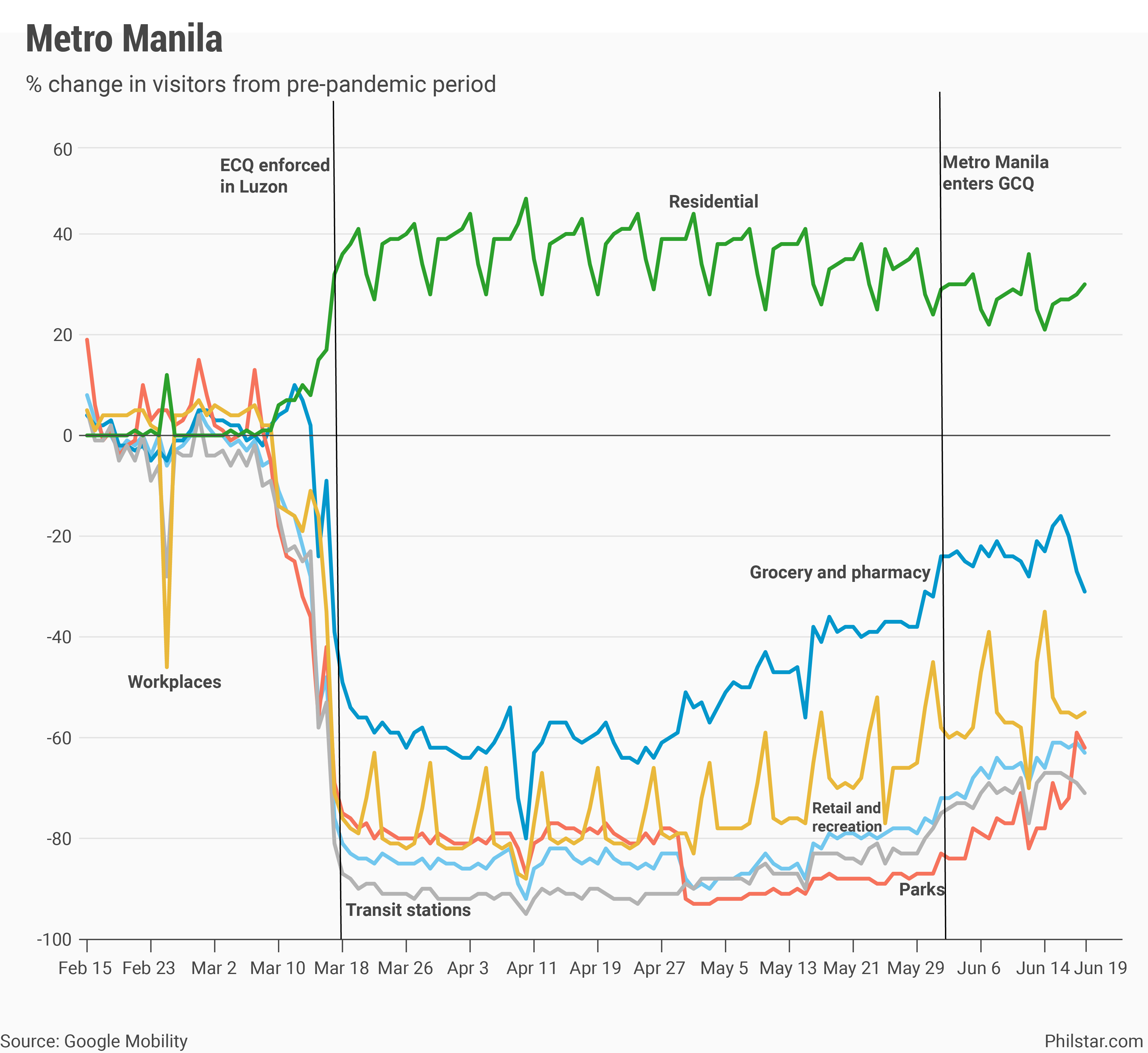
When two days after Duterte expanded the quarantine to cover the entire Luzon, movements in retail and recreation areas in Calabarzon region dropped by half, while in people's residences they increased by a quarter. Around 2 million people travel daily from Calabarzon and Central Luzon areas to the National Capital Region (NCR) for work, so when NCR shut down and killed public transport, it was to be expected that outskirt areas were likewise affected.
With Luzon cornering more than 70% of economic activity, the disruption in public transport was felt widely. For the entire Philippines, Google data showed movements in transport areas sank as much as 90% in March to April from January to February.
Cebuanos staying home, too
But people staying home, and really just following government rules, were not limited to Luzon. In Davao, Duterte’s hometown, movements in other areas, except homes, all declined starting March 15.
The trend was also getting sustained. In Central Visayas, where Cebu City is located, people have virtually not gone out. During the entire May, movements in retail outlets plummeted between 70 and 80%, while those in groceries dropped as much as 65% in one day. By June, just before Cimatu was deployed to oversee Cebu's COVID-19 response, people's visits to retail outlets in Central Visayas went down 70%, 44% in groceries and drugstores, and 58% in parks.
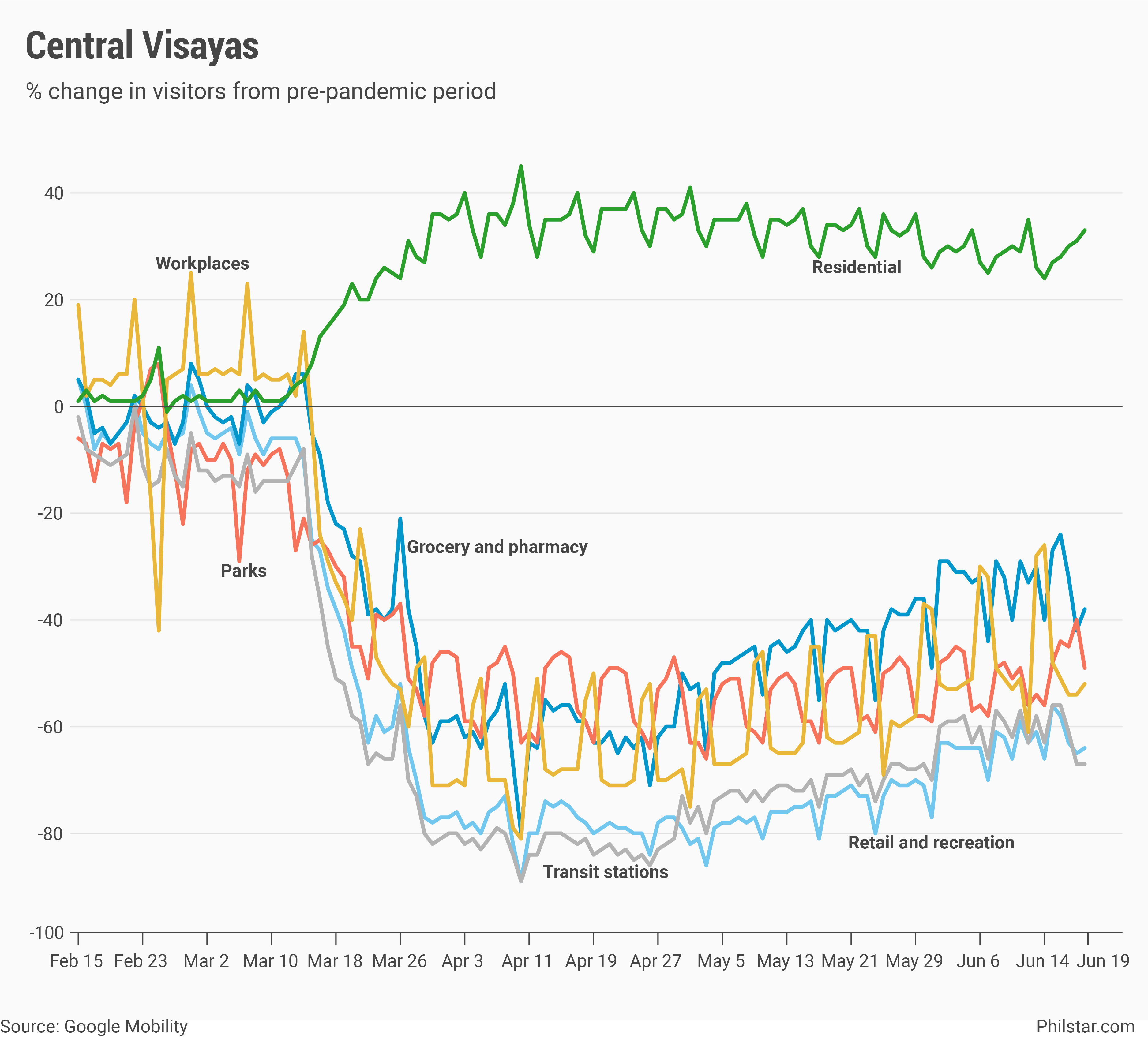
“What this data tells me is that Filipinos by and large are aware of the health risks under COVID-19 and are limiting their mobility,” Robert Siy, a transport economist, said in a text message.
Leading Asean
When one considers our Southeast Asian neighbors, lockdowns are so tight in the Philippines that movements are still getting limited even as some protocols like use of quarantine passes were eased. In groceries and pharmacies, for instance, foot traffic was still down 29% as of June 19. To compare, movements in groceries in Vietnam and Thailand, which also came out of strict quarantines, have started increasing 6% and 3%, respectively.
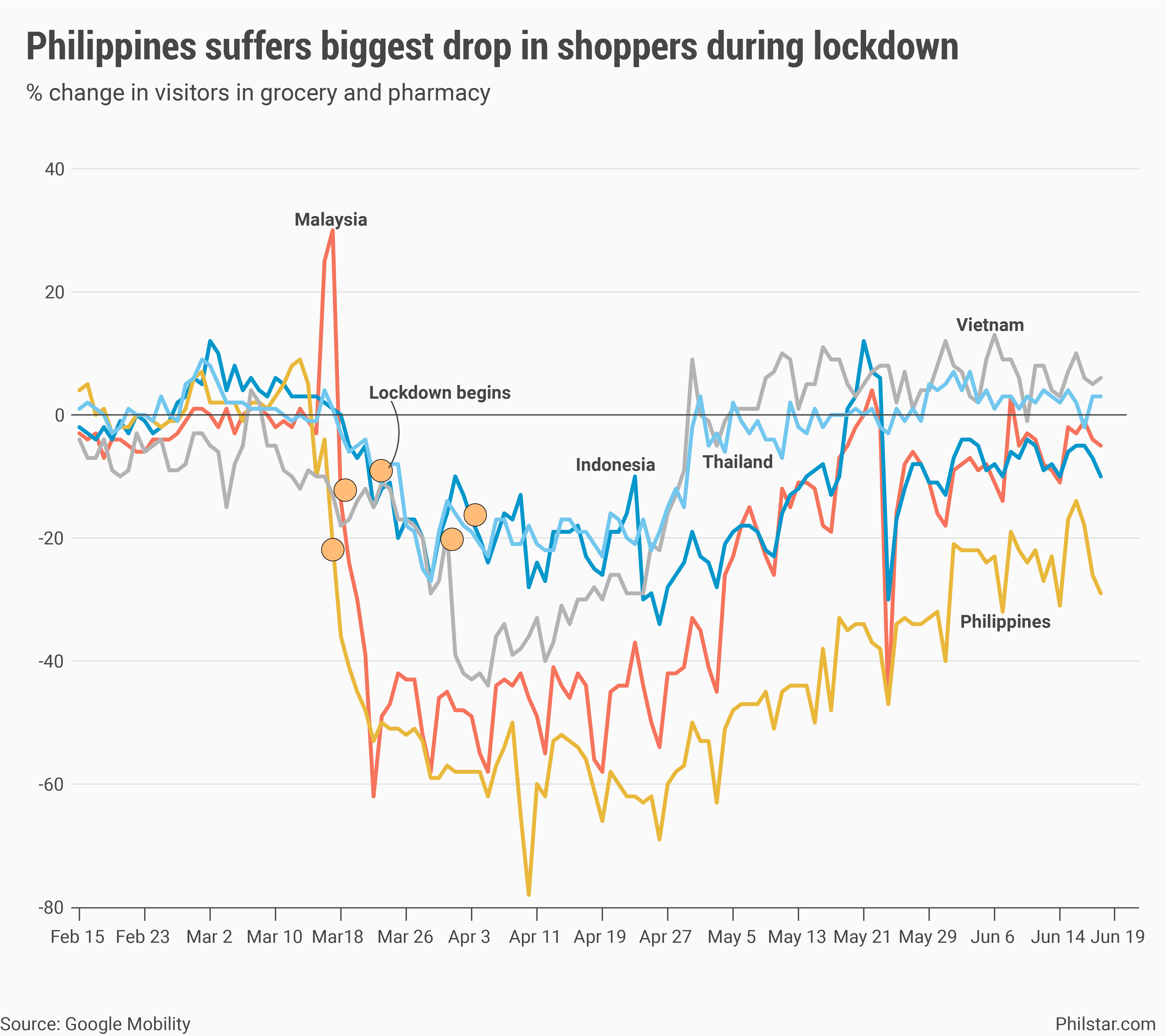
Even when compared with Indonesia, a country still in lockdown, movements in groceries in the Philippines were still more subdued, Google data showed.
Apart from Google, Apple Inc.’s navigation data corroborated a decline in people traffic during the lockdown period. Sought for comment on these data, Roque seemed to have changed tune from April.
“In fairness, ‘di naman pasaway and majority (not a majority of Filipinos are disobedient),” Roque said.
But as experts say lockdowns alone do not work to get the virus under control.
- Latest
- Trending





























